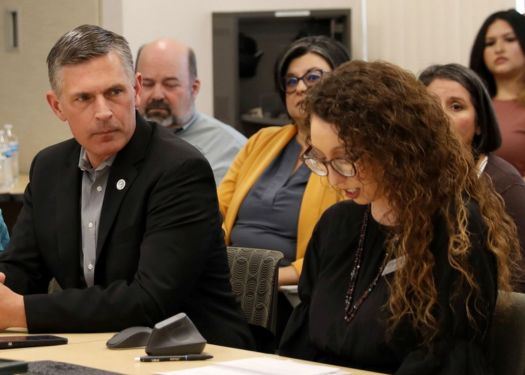Two federal grants will lower costs and strengthen infrastructure resilience [Note: With New Mexico’s Congressional delegation, the City of Las Cruces shares this information with residents.]
Source: City of Las Cruces (Photo: Courtesy)
Sens. Martin Heinrich (D-N.M.) and Ben Ray Luján (D-N.M.) and U.S. Rep. Gabe Vasquez (D-N.M.) welcomed two federal grants totaling $2,470,000 million for the City of Las Cruces and Doña Ana County from the U.S. Department of Energy (DOE) and the U.S. Department of Transportation (DOT) to address changing climate.
DOE awarded $470,000 to the City of Las Cruces for its Plugged in for Good (PIFG) Energy Alliance project to promote electrification and weatherization that will lower energy costs for low-income families, protect New Mexicans from extreme heat events, and build the clean energy workforce by investing in job training through registered apprenticeships.
Las Cruces Mayor Eric Enriquez is enthused about the grant award.
“This grant award will be a tremendous boost for some of our residents, particularly those who live in Las Cruces’ older, more established neighborhoods,” Enriquez said. “This grant is designed to help them retrofit and modernize the homes they have worked so hard to own. The improvements to their homes will make them more energy efficient and will improve the quality of life for their families. I am excited about the potential opportunities this grant could present for our hard-working residents,”
Lisa LaRocque, City Sustainability Officer said, “Senator Heinrich and federal leadership is committed to an energy future that will have a positive impact on all of us. Inspired by this vision, the Plugged in For Good Energy Alliance, made up of local stakeholders and community residents, created an innovative and equitable strategy that increases home energy retrofits, job security, economic development, and green material supply chains.”
For information about the $470,000 federal grant from DOE, click here.
Also, DOT awarded $2 million to Doña Ana County to conduct a comprehensive resilience plan that will focus on transportation infrastructure vulnerabilities during emergency evacuations and climate-related disasters. The DOT funding will support a study that recommends short-term projects for completion in three to five years, review land-use policies, and integrate nature-based solutions into the design and operations of the construction work. The funds are made possible through the Infrastructure Law, which Heinrich and Luján helped pass into law.
For information on the $2 million federal grant from DOT made possible through the Infrastructure Law, click here.
“Investing in working families includes doubling down on efforts to lower energy costs, strengthen the local workforce, and build resilient infrastructure,” Heinrich said. “I’m proud to welcome $2.5 million in federal funds for Doña Ana County that will make homes healthier and more efficient, lower costs to make utility bills more affordable, and create more high-quality career opportunities that New Mexicans can build their families around.”
Lujan said, “I’m proud to join my colleagues to welcome these critical investments that will improve transportation infrastructure and create more opportunities for clean energy. This investment from the Department of Transportation will help identify how our local infrastructure in Doña Ana County can be strengthened to support emergency evacuations, including during natural disasters. In addition, I’m glad this separate investment from the Department of Energy will help lower costs for families by expanding access to clean, renewable energy through workforce education and training.”
Vasquez added, “As New Mexicans, we know all too well about the challenges climate change poses with the increased threat of wildfires, drought and extreme heat. I’m proud to secure this funding for Doña Ana County to address transportation vulnerabilities during emergencies and climate disasters. These investments will lay the groundwork to strengthen our infrastructure, lower costs and build a more resilient future.”






